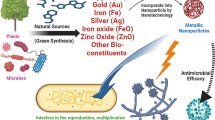Abstract
HPRP-A1, a 15-mer α-helical cationic peptide, was derived from N-terminus of ribosomal protein L1 (RpL1) of Helicobacter pylori. In this study, HPRP-A1 was used as a framework to obtain a series of peptide analogs with different hydrophobicity by single amino acid substitutions in the center of nonpolar face of the amphipathic helix in order to systematically study the effect of hydrophobicity on biological activities of α-helical antimicrobial peptides. Hydrophobicity and net charge of peptides played key roles in the biological activities of these peptide analogs; HPRP-A1 and peptide analogs with relative higher hydrophobicity exerted broad spectrum antimicrobial activity against Gram-negative bacteria, Gram-positive bacteria and pathogenic fungi, but also showed stronger hemolytic activity; the change of hydrophobicity and net charge of peptides had similar effects with close trend and extent on antibacterial activities and antifungal activities. This indicated that there were certain correlations between the antibacterial mode of action and the antifungal mode of action of these peptides in this study. The peptides exhibited antimicrobial specificity for bacteria and fungi, which provided potentials to develop new antimicrobial drugs for clinical practices.
Similar content being viewed by others
References
Li Y, Qi X, Zhang QH, Huang YD, Su ZJ. Overview on the recent study of antimicrobial peptides: Origins, functions, relative mechanisms and application. Peptides, 2012, 37(2):207–215
Hancock REW, Rozek. Role of membranes in the activities of antimicrobial cationic peptides. Fems Microbiol Lett, 2002, 206(2):143–149
Sitaram N, Nagaraj R. Interaction of antimicrobial peptides with biological and model membranes: Structural and charge require-ments for activity. Biochimica et biophysica acta, 1999, 1462(1–2):29–54
Jung HJ, Park Y, Sung WS, Suh BK, Lee J, Hahm KS, Lee DG. Fungicidal effect of pleurocidin by membrane-active mechanism and design of enantiomeric analogue for proteolytic resistance. Biochim Biophys Acta, 2007, 1768(6):1400–1405
Chen Y, Guarnieri MT, Vasil AI, Vasil ML, Mant CT, Hodges RS. Role of peptide hydrophobicity in the mechanism of action of alpha-helical antimicrobial peptides. Antimicrob Agents Chemother, 2007, 51(4):1398–406
Tsai CW, Ruaan RC, Liu CI. Adsorption of antimicrobial indolicidin-derived peptides on hydrophobic surfaces. Langmuir, 2012, 28(28):10446–10452
Mookherjee N, Mookherjee N, Brown KL, Bowdish DM, Doria S, Falsafi R, Hokamp K, Roche FM, Mu R, Doho GH, Pistolic J, Powers JP, Bryan J, Brinkman FS, Hancock RE. Modulation of the TLR-mediated inflammatory response by the endogenous human host defense peptide LL-37. J Immunol, 2006, 176(4):2455–2464
Lee DG, Kim HN, Park Y, Kim HK, Choi BH, Choi CH, Hahm KS. Design of novel analogue peptides with potent antibiotic activity based on the antimicrobial peptide, HP (2–20), derived from N-terminus of Helicobacter pylori ribosomal protein L1. Biochim Biophys Acta, 2002, 1598(1–2):185–194
Huang YB, Wang XF, Wang HY, Liu Y, Chen Y. Studies on mechanism of action of anticancer peptides by modulation of hydrophobicity within a defined structural framework. Mol Cancer Ther, 2011, 10(3):416–426
Bylund J, Christophe T, Boulay F, Nystrom T, Karlsson A, Dahlgren C. Proinflammatory activity of a cecropin-like antibacterial peptide from Helicobacter pylori. Antimicrob Agents Chemother, 2001, 45(6):1700–1704
Putsep K, Branden CI, Boman HG, Normark S. Antibacterial peptide from H. pylori. Nature, 1999, 398(6729):671–672
Huang JF, Xu YM, Hao DM, Huang YB, Liu Y, Chen YX. Structure guided de novo design of alpha-helical antimicrobial peptide with enhanced specificity. Pure Appl Chem, 2010, 82(1):243–257
Chen Y, Mant CT, Hodges RS. Determination of stereochemistry stability coefficients of amino acid side-chains in an amphipathic alpha-helix. J Pept Res, 2002, 59(1):18–33
Chen Y, Mant CT, Farmer SW, Hancock RE, Vasil ML, Hodges RS. Rational design of alpha-helical antimicrobial peptides with enhanced activities and specificity/therapeutic index. J Biol Chem, 2005, 280(13):12316–12329
Zhou NE, Mant CT, Hodges RS. Effect of preferred binding domains on peptide retention behavior in reversed-phase chromatography: Amphipathic alpha-helices. Pept Res, 1990, 3(1):8–20
Kovacs JM, Mant CT, Hodges RS. Determination of intrinsic hydrophilicity/hydrophobicity of amino acid side chains in peptides in the absence of nearest-neighbor or conformational effects. Biopolymers, 2006, 84(3):283–297
Lee DL, Mant CT, Hodges RS. A novel method to measure self-association of small amphipathic molecules: Temperature profiling in reversed-phase chromatography. J Biol Chem, 2003, 278(25):22918–22927
Mant CT, Chen Y, Hodges RS. Temperature profiling of polypeptides in reversed-phase liquid chromatography. I. Monitoring of dimerization and unfolding of amphipathic alpha-helical peptides. J Chromatogr A, 2003, 1009(1–2):29–43
Jenssen H, Hamill P, Hancock RE. Peptide antimicrobial agents. Clin Microbiol Rev, 2006, 19(3):491–511
Giri S, Kindo AJ. A review of Candida species causing blood stream infection. Indian J Med Microbiol, 2012, 30(3):270–278
Avrahami D, Shai Y. Conjugation of a magainin analogue with lipophilic acids controls hydrophobicity, solution assembly, and cell selectivity. Biochemistry, 2002, 41(7):2254–2263
Schneiter R, Brugger B, Sandhoff R, Zellnig G, Leber A, Lampl M, Athenstaedt K, Hrastnik C, Eder S, Daum G, Paltauf F, Wieland FT, Kohlwein SD. Electrospray ionization tandem mass spectrometry (ESI-MS/MS) analysis of the lipid molecular species composition of yeast subcellular membranes reveals acyl chain-based sorting/ remodeling of distinct molecular species en route to the plasma membrane. J Cell Biol, 1999, 146(4):741–754
Chen Y, Vasil AI, Rehaume L, Mant CT, Burns JL, Vasil ML, Hancock RE, Hodges RS. Comparison of biophysical and biologic properties of alpha-helical enantiomeric antimicrobial peptides. Chem Biol Drug Des, 2006, 67(2):162–173
Author information
Authors and Affiliations
Corresponding authors
Rights and permissions
About this article
Cite this article
Zhao, L., Huang, Y., Gao, S. et al. Comparison on effect of hydrophobicity on the antibacterial and antifungal activities of α-helical antimicrobial peptides. Sci. China Chem. 56, 1307–1314 (2013). https://doi.org/10.1007/s11426-013-4884-y
Received:
Accepted:
Published:
Issue Date:
DOI: https://doi.org/10.1007/s11426-013-4884-y




